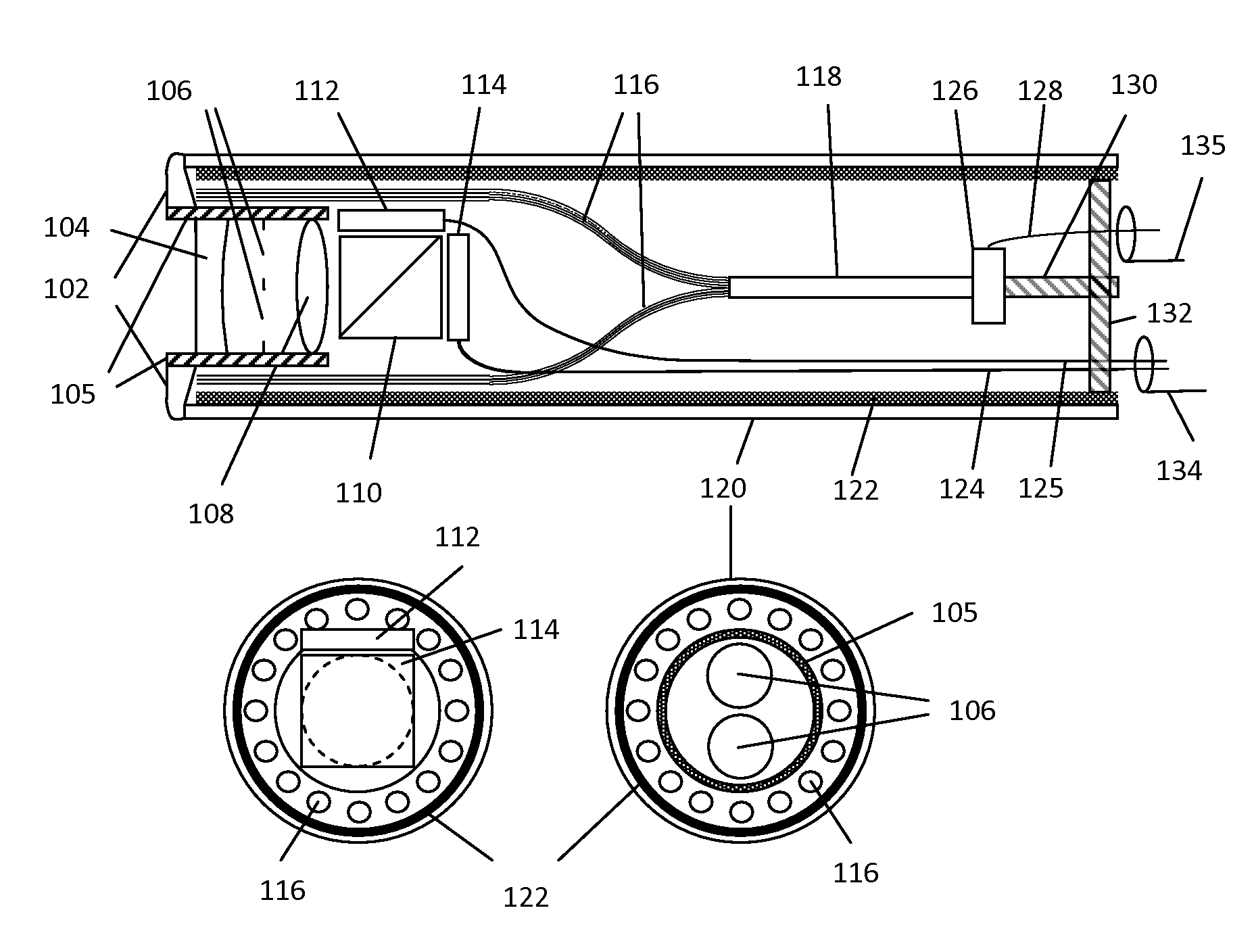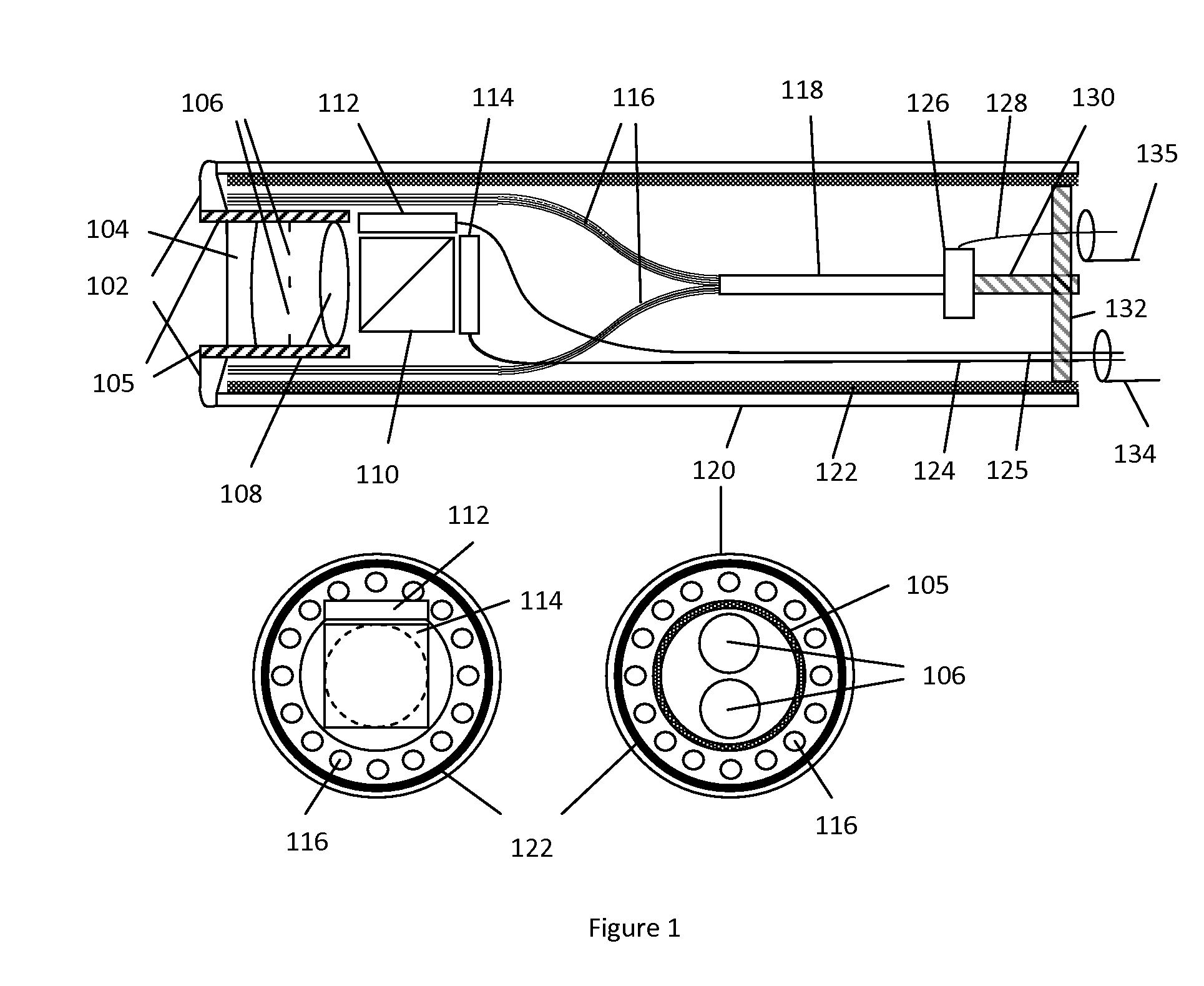Disposable Stereoscopic Endoscope System
a stereoscopic endoscope and system technology, applied in the field of endoscopes, can solve the problems of limited performance of endoscopes based on fiber cables, limited application potential, optical attenuation, etc., and achieve the effect of low cos
- Summary
- Abstract
- Description
- Claims
- Application Information
AI Technical Summary
Benefits of technology
Problems solved by technology
Method used
Image
Examples
Embodiment Construction
[0032]A novel simultaneous stereoscopic endoscope system based on solid state lighting is proposed. One unique feature of the present invention is the compact design of stereoscopic imaging and lighting within a disposable housing such that only electrical signal connection is required between the disposable part and the rest of the endoscope system for transmitting power, imaging and control signals. In particular, a miniature low cost digital imaging unit is placed directly at the distal end of the endoscope, which eliminates the need for a relay optical system. The new optical design makes it possible to miniaturize the imaging unit to the size similar to traditional optical endoscopes.
[0033]FIG. 1 shows a section view of the disposable imaging and lighting unit of the presently disclosed stereoscopic endoscope. In terms of imaging optics, two optical modules such as the lenses 104 and 108 are used to form two images of an object onto two electronic imaging sensors 112 and 114. T...
PUM
 Login to View More
Login to View More Abstract
Description
Claims
Application Information
 Login to View More
Login to View More - R&D
- Intellectual Property
- Life Sciences
- Materials
- Tech Scout
- Unparalleled Data Quality
- Higher Quality Content
- 60% Fewer Hallucinations
Browse by: Latest US Patents, China's latest patents, Technical Efficacy Thesaurus, Application Domain, Technology Topic, Popular Technical Reports.
© 2025 PatSnap. All rights reserved.Legal|Privacy policy|Modern Slavery Act Transparency Statement|Sitemap|About US| Contact US: help@patsnap.com



